
views
Set up an automatic vacuum cleaner.
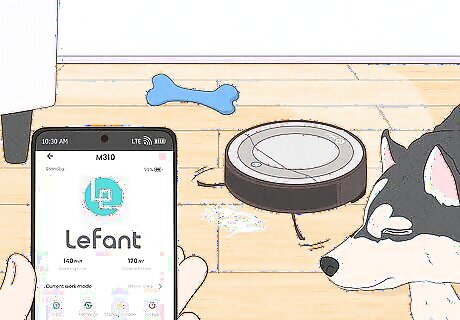
A robot vacuum cleaner keeps floors clean with little effort on your part. You could use a traditional vacuum once a week, but why not cut some corners and give yourself a break where you can? Consider programming an automatic vacuum cleaner to suck up any dirt, debris, and pet hair on your floor at least once a week. Try a highly-rated option like the Lefant M310 robot vacuum cleaner, which comes with innovative features like: The most advanced PSD obstacle avoidance technology to easily maneuver around furniture and other objects in your home. A small and ultra-thin design that cleans hard-to-reach nooks and crannies for a more comprehensive clean. A special vacuum inlet that’s suitable for sucking up hair without tangles and jams. One-touch activation so you don’t need to worry about any complicated controls. Compatiblity with Amazon Alexa & Google Assistant. By using an automatic vacuum cleaner like Lefant’s M310 model, you save yourself the hassle of having to sweep, crouch down to grab stubborn clumps of hair, and pick up toys and other miscellaneous objects around the home (The M310 is capable of moving around them) before you start cleaning. It makes your life easier by keeping your floors clean with minimal effort.
Sweep daily with a broom.

A daily sweeping routine will help keep high-traffic areas clean. As part of your bedtime routine (or at another point in your daily schedule), sweep through the high-traffic areas of your home with a broom to remove dirt, mud, grass, leaves, and pet hair. By keeping the high-traffic areas of your home clean on a daily basis, you’ll prevent more dirt and debris from migrating to and accumulating in the harder-to-reach nooks and crannies of your home.
Mop your floors once a week.
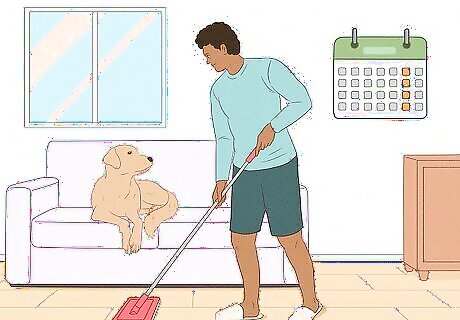
Mopping will loosen any stubborn mud, dirt, or hair stuck to your floor. Alongside your daily sweeping routine, add a weekly mopping session to give your floors a deeper clean. You can use a traditional mop or try a spray mop. Spray mops feature a trigger release that directly sprays cleaner onto your floors. If you have tile floors, you can also use a steam mop to both clean the surfaces and kill any bacteria or germs that are lingering on the tiles. Alternatively, you can simply spray a floor-safe cleaner onto the floor and wipe it up with a microfiber cloth. This method is effective for removing dirt and dust, but it’s more time- and labor-intensive.
Use a de-shedding tool regularly.

Daily brushing sessions will keep hair buildup to a minimum. One of the biggest problems for pet owners is the amount of fur and hair that dogs and cats shed on a daily basis. To minimize these messes, brush your pet’s hair every day with a de-shedding brush. Ideally, brush your pet outside so that less hair is flying around and settling in your living space. By brushing away your dog or cat’s loose fur and disposing of it once a week, there will be less of it accumulating on your floors!
Wipe your pet’s paws every time they come in.

A towel or paw cleaner will keep your pet from tracking mud indoors. On rainy days (and even some dry ones!), it’s important to get as much moisture and mud off of their paws before they tarnish your home with it. For a simple solution, keep an old towel by your outside door and wipe your dog's paws off when they come in.
Bathe your pet regularly.
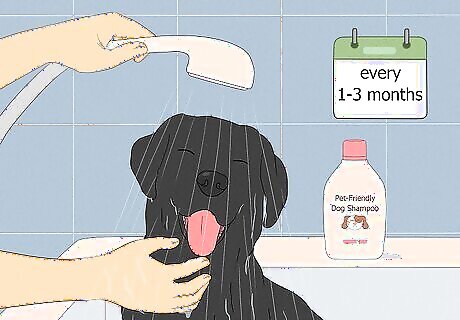
Routine grooming reduces the amount of dirt and debris on your pet. Every fur baby needs regular baths, typically about every 1-3 months, depending on the breed. When you’re ready for bathtime, brush your dog before placing them in a tub filled with lukewarm water and pet-friendly shampoo. Suds them up and gently massage the shampoo from head to tail, then rinse the soap out thoroughly. After the bath, reward your pup with plenty of treats and cuddles! If your dog is not a big fan of bath time, try putting peanut butter or spray cheese on the wall of the shower. They’ll be occupied with licking up the treat, which will hopefully allow you to finish their wash without them jumping out of the tub!
Clean up pet accidents ASAP.
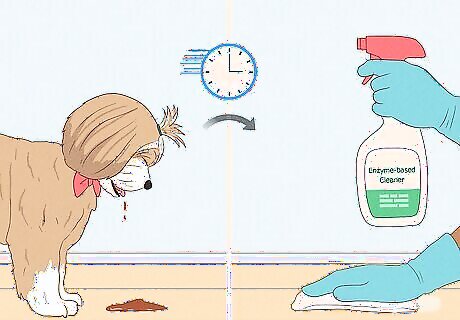
You’ll be able to prevent staining by cleaning feces, urine, and vomit quickly. When your pet makes a mess that results in any sort of excrement or fluid on your floors, use an enzyme-based cleaner to clean up the mess as quickly and as effectively as possible. Acting fast when pet messes arise will help to prevent staining and remove any potential bacteria from your flooring.
Keep your pet’s eating area clean.

Your pet’s food and water station should be clean enough to eat off of! Well, maybe not for you, but definitely for them! Set up a designated feeding area for your pet to reduce messes, scratches, and stains in other parts of your home. Place down food and water bowls with a durable rubber mat underneath them to pick up any drips or splashes. Wash your pet’s bowls every day, and, while you’re at it, wipe down the floors, walls, and baseboards around the feeding area at least once a week.
Give your pet their own “room.”

Having a designated “den” will keep much of your pet’s hair and dirt confined. Select a comfortable and washable bed for your dog or cat (and remember to wash their bed every week!). Place it in a specific room of your home—this can be a shared space or a bonus room that’s specifically used for your pet. Over time, this room will become the place where your pet likes to hang out and spend most of its time. As a result, most of their hair and dirt will also stay in that room, making your cleaning process easier!
Polish floors every 3-4 months.
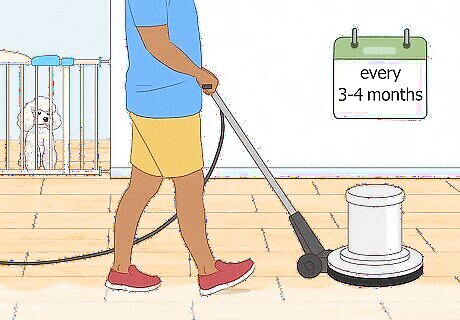
Polishing gives floors a shiny finish and protection from damage. Some types of polish even help to repel dirt and grime, further improving the cleanliness of your floors! Choose a polish that’s suitable for your type and color of flooring, then follow the manufacturer’s instructions exactly to avoid any damage. Consider also using a grout sealer (if applicable) for additional protection against any scratches or accidents that your pet may cause.












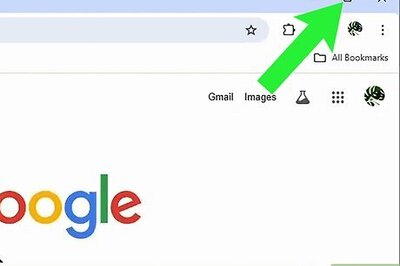







Comments
0 comment